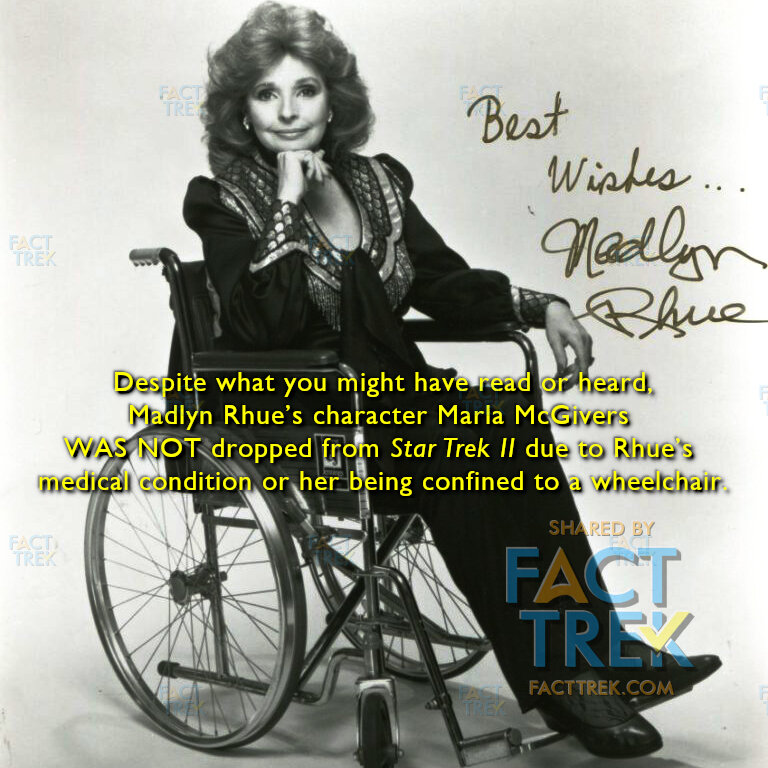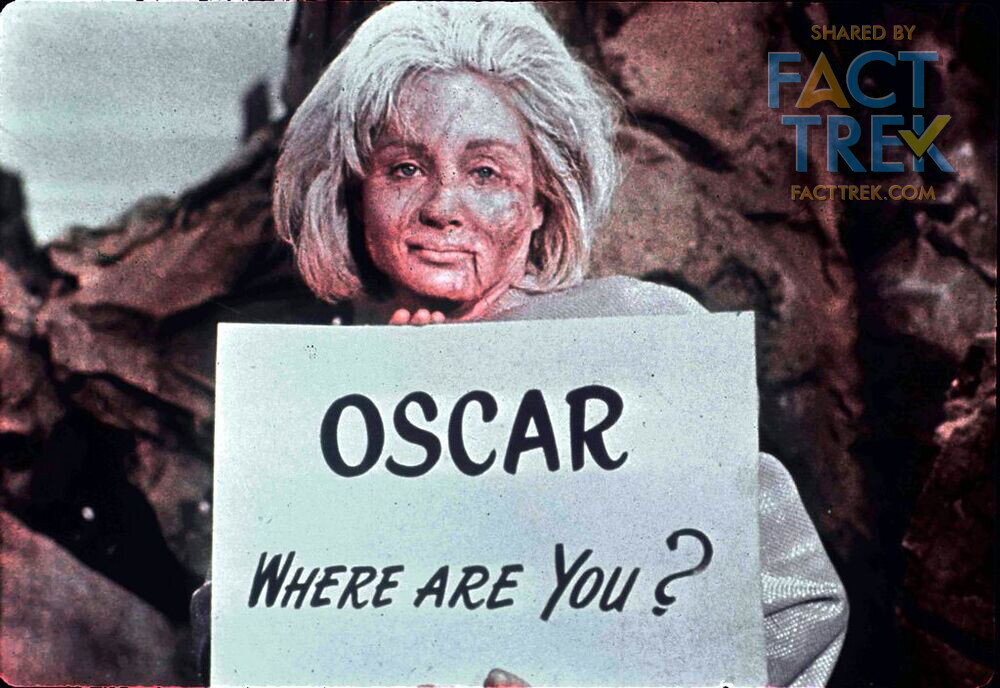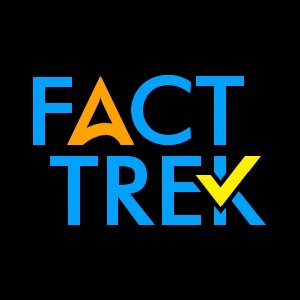
Keep on Trekin’
Strange New Worlds’‘ “Subspace Rhapsody” is the first time a Star Trek series or movie has engaged the genre of the musical, but 47 years earlier a parody of the OG boldly went Broadway... by way of newsprint.
MAD Magazine took its first shot at Star Trek in 1967, but took a second crack at the series seven years after the show’s cancelation; lampooning not just the show’s characters and its format, but its syndication success and the business of selling merch to Trekkies… And did so in the format of a musical.
The comic itself is a snapshot of where Trek fandom stood in the American bicentennial year of 1776.

Where No Pilot Had Gone Before?
Since 1968 it’s often been claimed that NBC’s order for a second pilot for Star Trek was “unprecedented” and marked the “first time in television history” such an “unheard of” thing had ever happened.
Is it true? Is any of it true? Did “Where No Man Has Gone Before” truly mark the first time a prospective series had a second pilot episode? Was NBC really the first television network to order a second pilot after rejecting the first one? Did the move actually cause "quite a stir within the industry"?
Read on to find out.

The Naked Cliffhanger
“The Naked Time” is an all-time classic Star Trek episode memorable for characters going berserk and revealing their “naked” psyches. The episode ends with a “laws of physics”-defying bang as the starship restarts her engines cold in an “implosion” and is hurled into a time warp, ending—as Spock observes—in the recent past.
But a redo didn’t just happen on the screen. It happened in the production of the episode.
On Thursday, July 7th, 1966, the closing scenes of “The Naked Time” went before the cameras.
But the finale filmed on this day would not make it to the air.
Why did this happen? What was this ending? It's long been said to have been a cliffhanger. Is that true? Let’s risk an implosion and time warp back 57 years to find out.

Uhura, Black To the Future
When Lt. Uhura appeared on the debut episode of Star Trek in September 1966, she was boldly going where no black woman had gone before: as a continuing character on an American network TV series depicting a future where the color of her skin didn’t matter, only the content of her character.
The character has since become an iconic touchstone, so instead of retreading oft-told tales, let’s take a brief look instead at how Nichelle landed on Star Trek and what was the state of race portrayals on American TV in that era.

The Great Bird Of the Radio, 1974
Stories change over time and with repetition, so it’s important to preserve early accounts wherever possible. Case in point, a radio interview with Gene Roddenberry recorded only 4.5 years after the Star Trek went off the air, and only months after the premier of its Saturday morning follow-up.
In January 1974 a young DJ named Scott Arthur at WARM radio in Scranton, Pennsylvania learned that Roddenberry was scheduled to speak at a local college. “I got his phone number and set up an interview to promote the event in advance.” Decades later, Arthur found the raw recording and allowed it to be shared online. Join us as we FACT TREK this vintage recording.

Dos Trequis
Between 2006 and 2016, a popular Dos Equis beer ad campaign featured a debonair, gray-bearded gentleman, identified as “The Most Interesting Man in the World,” who ended each ad with a variation on the slogan — “I don’t always drink beer, but when I do, I prefer Dos Equis. Stay thirsty, my friends.”
For a decade now memes identify the actor as Jonathan Goldsmith and state that he appeared as an non-speaking, unnamed redshirt in an episode of the original Star Trek.
Only one of those is true.
Isn’t that Most Interesting?

The Flying Fickle Finger of Fate
For decades Trek fans have rolled their eyes—and worse—at NBC’s decision to put Rowan and Martin’s Laugh-In into a Monday time slot which had been promised to Star Trek, banishing their beloved show to the “Friday Night Death Slot” and inevitable cancellation.
Did Rowan and Martin’s Laugh-In give the finger to Star Trek? And did NBC give the bird to The Great Bird of the galaxy?
It’s a tale of demographics and ratings, how those led to the cancellation and immediate revival of a popular CBS western, Lucille Ball’s perennial top-10 series, how those created a “kamikaze” slot that doomed a former hit spy show, with a resulting hole in NBC’s schedule that would be filled either by explorers of the final frontier or a bunch of kooks who would “sock it to me” anything and everything, and which of them would discover if Friday night at 10 p.m. was—in fact—a Death Slot at all.
You can bet your sweet bippy that we have the answers.

The Off-Center Seat: 55 Years of Myth Making
In today’s post-truth, fact-challenged world, just what, in fact, is a fact?
And what happens when the people who have direct and personal experience/memories of an event are no longer with us? Absent their first-hand accounts must we depend on second-, third- or nth-hand accounts by people who weren’t there?
With that in mind, let’s rip through the upholstery of “Lucy Loves Star Trek,” the debut episode of the recent docuseries The Center Seat, and see how close the oral tradition on display in this documentary conforms to historical documents, first-person accounts, and contemporaneous media coverage.

Emblem-atic
Nothing symbolizes Star Trek like the insignia worn by its Starfleet characters as seen on TV from 1964–present day. Midyear 2020 brought it to the forefront when the official US Space Force emblem was unveiled to historically naïve cries that it “rips off” the Star Trek emblem.
Over the years, many assumptions have been made about the various Starfleet insignia worn on the original Star Trek to the upcoming Strange New Worlds. Join us as we take a deep dive into the show’s most distinctive emblems, their origins, inspirations and the intentions behind them.

Trek II Myths Rhue the Day
Was Marla McGivers offed because of actress Madlyn Rhue’s health issues?
If you look around the internet and read a little trivia about the making of Star Trek II: The Wrath of Khan (1982), sooner or later you’re going to encounter a variation on the following:
Originally Marla McGivers (Madlyn Rhue), the ship’s historian seduced by Khan in the original episode, was supposed to return as Khan’s wife. Sadly, Bennett discovered the actress was confined to a wheelchair due to multiple sclerosis. Instead of re-casting her, he had her character written out of the story.[1]But here’s the problem, Fact Trekkers...
We can’t find a reputable source of this claim, let alone a quote.

Flip-Top Flip-Flop
Star Trek gets credited with inspiring all sorts of things, but one such claim gets constant repetition in our mobile phone age: that the original series flip-top communicators inspired the cell phone, or at least specifically the “flip phone”.
But recently (Spring 2021) an April 1963 news clipping started making the rounds on social media that featured a “pocket” telephone.
Does it look a little…familiar?

in Search of… Spock
Over the years, a number of names have been floated as the “first choice” to play the character of Mr. Spock. But were Goober Pyle, Rollin Hand, Miguelito Quixote Loveless, Nyota Uhura, or McCoy, Leonard H. ever actually considered for the part? Let’s explore the truth behind these stories.

TV GUIDE Groks Spock, 1972
Whilst researching our previous blog post we ran across Mark’s Super Blog and a 2009 post including his scan of a 1972 TV Guide article titled Grokking Mr. Spock, which concerned Trek fandom and specifically that first Star Trek Lives! convention from which we transcribed three panels in previous posts.
Read on to see how TV Guide described early Star Trek fandom…

Fontana & Barrett Face the Fans, 1972
On January 22nd, 1972 the doors were thrown open to direct interaction between thousands of Star Trek’s fans and some of its makers at the first Star Trek Lives! convention—the first major Trek con.
Introduced by Issac Asimov, here are Dorothy “D.C.” Fontana and actor Majel Barrett answering fan questions about everything from unintentional plagiarism to the show’s even-then apparent chauvinism.

A Khan Noonien Thing
When Star Trek II: The Wrath of Khan opened to a record opening weekend Paramount Pictures pounced on the idea of making sequels and spinoffs. Not eight months after the film’s release they received a 138 page screenplay, not for a sequel but a prequel to both the movie and the 60s TV episode that inspired it.
The script was titled THE RISE OF KHAN.
Never before reported, this is a FACT TREK exclusive.

T V, Or Not T V, Is That the Question?
The ABC Sunday Night Movie for February 25, 1985 marked the US commercial television premiere of Star Trek II: The Wrath of Khan, which had been released theatrically almost three years earlier.
But have you heard the rumor that this triumphant sequel was originally conceived as a humble TV movie of the week?
And, whether you’ve heard this or not or believe it or not, we always have to ask: Is it true?

de Forest, Kellam
Kellam de Forest died in Santa Barbara, California on January 19, 2021 from complications of COVID-19.
So why is this significant?
Most Star Trek fans probably have no idea who Kellam de Forest was. But he and his de Forest Research company were important if unsung players in the production of the original Star Trek series, reading each story outline and script to provide technical advice, clear names, point out potential legal issues, etc.

1972 Gives Us The Bird
What did The Great Bird of the Galaxy say to this first major assemblage of Star Trek fans? Read this January 1972 transcript to find out!
Isaac Asimov: Our guest of honor at Star Trek Convention, is a man who is known to most you, if not by sight, by name and stature. Out of a television serial, he has created a legend, which seems to expand and grow with time. Star Trek is but only one man’s glimpse of the future, yet it is a dream shared by all. Star Trek lives, and it is my pleasure to introduce you to the creator and executive producer of Star Trek, Mr. Gene Roddenberry.

Oscar, Where Are You? Part I
So many figures in Star Trek history have been interviewed so many times that it’s easy to forget that there are key players most of us have heard little or nothing from.
One was Oscar Katz, Executive Vice President in charge of Production and the person who brought Gene Roddenberry to Desilu to develop new shows. His tenure at the studio was brief, but without Katz, Star Trek might never have been more than a pitch. But where is his story?
Oscar, where are you?
Read on to hear his tale, in his own words, transcribed from a rare 1972 public appearance.

Red Skies, Red Garters
If Star Trek’s most overtly “western” episode is known for anything it’s for its abstract town setting and blood red sky. But, like so many things Trek, though it’s been discussed for half a century there are a number of misapprehensions and myths around the making of this episode, from why writer Gene Coon employed a pseudonym to what really inspired that unreal setting.
Saddle up and follow us, cowpokes, because we’re riding out to Limbo County to find the answers.
